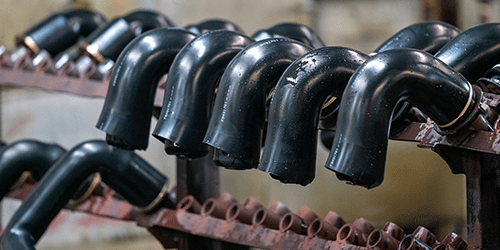A very basic definition of a thermoplastic substance is one which becomes plastic when heated to a certain temperature and then hardens upon cooling. An important characteristic of such a material is that it does not stay hard once cooled.
Thermoplastics are polymers that can be re-heated and molded again if needed. A wide range of formulas exist and mostly thermoplastics tend to have a higher molecular weight. The organic composition changes according to the properties required in the application.
This temperature is the point at which the material starts to soften, approaching the melting point.
Mostly consisting of a long chain of unlinked polymers, the molecules are connected to each other via physical forces. Van der Waals, aromatic-stacking and dipole-dipole attractions cause the molecules to attract to one another, forming a crystalline structure after it is cooled to a particular temperature.
The polymers are mixed with other components to soften or harden the substance based on the applications. Plasticizers are often added to thermoplastics to allow the material to have higher flexibility at lower temperatures.
Thermoplastics and their composites are and have been a regular part of our lives. Some very popular ones are polypropylene, polyethylene (polythene), polystyrene (Styrofoam), polytetrafluoroethylene (PTFE, or more famously, Teflon), polyvinylchloride (PVC), polyamide (Nylon) and acrylonitrile butadiene styrene (ABS).
Even though the chemical names might be unrecognizable, we can identify all of these thermoplastics as we encounter them several times each day.
Thermoplastics, along with their composites are used in making bottles, cups, clothes, cooking utensils, pipes, airbags and several other products. Due to their physical properties, thermoplastics are perfect for injection molding.
Having the ability to be molded into any shape, combined with insulation properties, makes thermoplastics extremely useful in the automotive and construction industries.
In addition, as the material goes back to a malleable form when heated, thermoplastics can be recycled and reused after going through the proper processes.
Most people disregard thermoplastics and deem them harmful to the environment due to their non-biodegradable nature. Their recyclable properties are thus overlooked.
If more attention is paid on recycling and re-using thermoplastics, waste going to landfills will decrease and amount of new thermoplastics will reduce.
